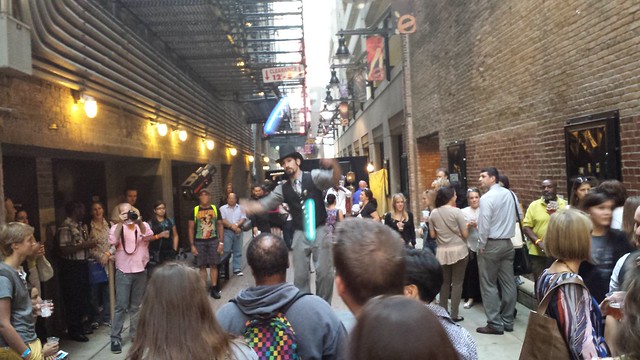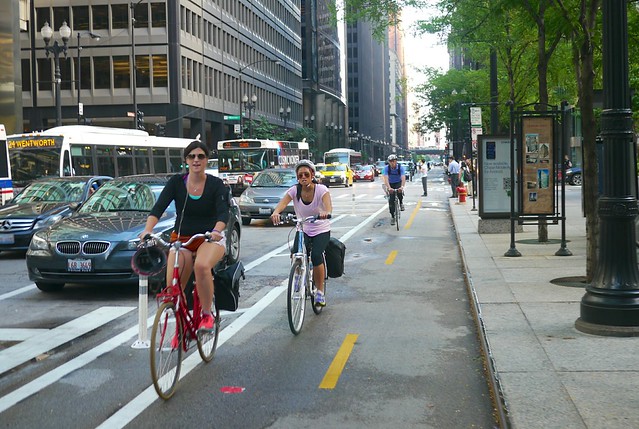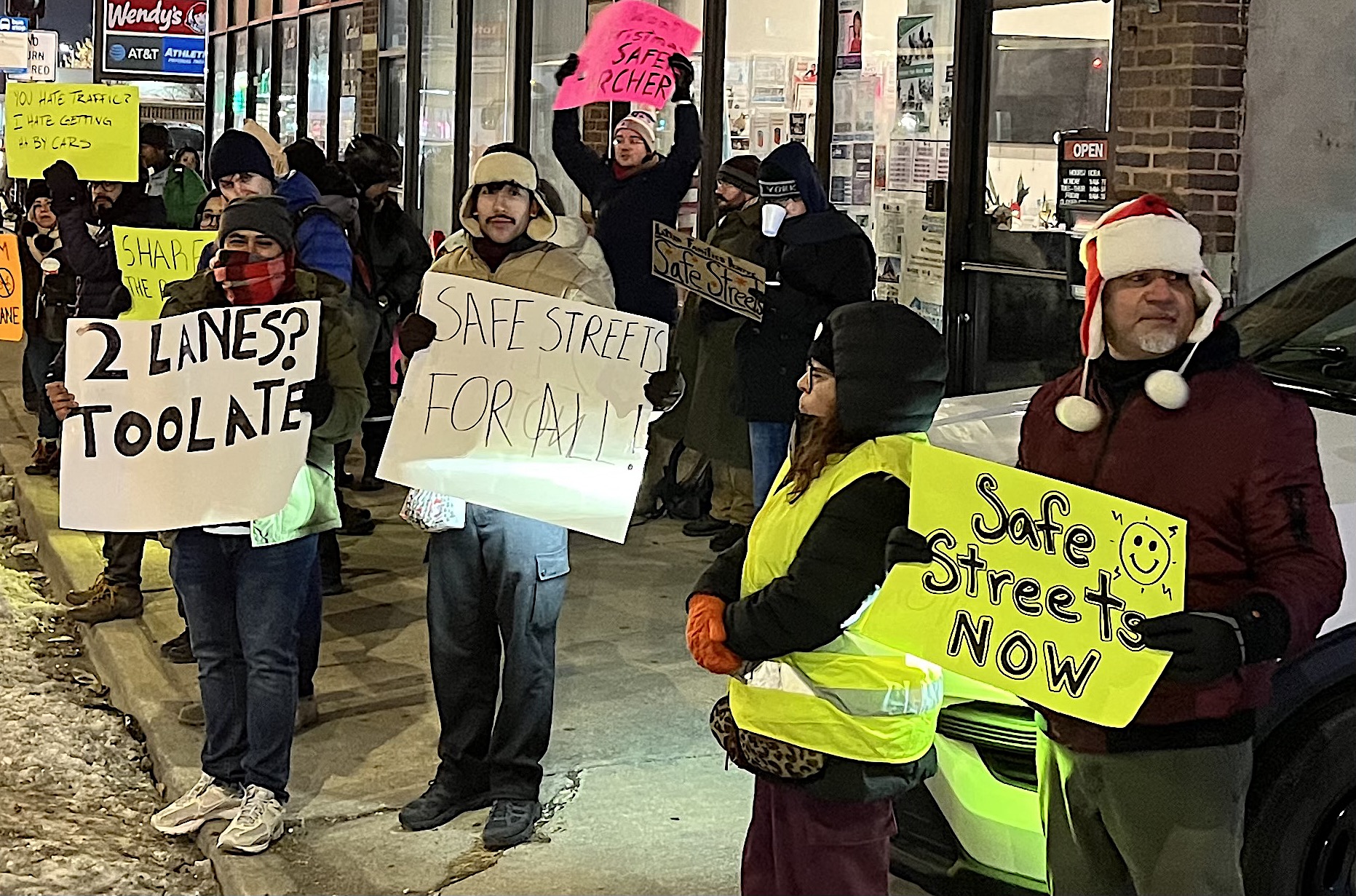At the Chicago Loop Alliance’s annual meeting last week, former transportation commission Gabe Klein discussed how he was able to apply private sector strategies to city government in order to quickly launch several major sustainable transportation projects during his 2.5-year tenure. He also talked about the general trend towards more efficient urban living, including transit-oriented development and the shared economy, fueled by new technologies.
At the start of the event, CLA board president David Broz provided announce transportation, urban planning, and placemaking initiatives the Loop Alliance will be sponsoring this year. In 2015, CLA had nine Springboard pedestrian counters installed along State Street between Congress and Wacker, and they plan to use the data to help encourage commercial development along the corridor, as well as improve the pedestrian experience on the street. This year, they’ll be adding six more counters in other parts of the Loop.
CLA will also be presenting the Downtown Futures Series, featuring talks about urban planning, transportation, data science, and technology. The series kicks off on April 14 with “Big Data. Big City,” featuring keynote speaker Charlie Catlett of University of Chicago and Argonne National Laboratory; followed by “Our Cities’ Autonomous Futures” with Lauren Isaac, Manager of Sustainable Transportation at Parsons Brinckeroff, on June 15; and “Experiential City” with Carol Coletta from The Kresge Foundation on September 14.
The popular ACTIVATE placemaking series will return this year for its third summer, with six arts-oriented parties held in downtown alleys between May and October. The location of each event will be announced a week prior.
Klein, who recently published the book Startup-City, based on his experiences as an entrepreneur and the transportation chief for Chicago and Washington, D.C., started his talk by discussing how dense housing, transit, bicycle use, and the shared economy can help make cities work better.
“Postwar, we were all really sold on this idea of buying as much as possible, consuming as much as possible, the white picket fence, two cars, and now the big-screen TV,” he said. “But we can’t continue to consume at the same rate, and young people just don’t care about stuff as much as many of us did. And we’re not just focused on consuming less when it comes to buying stuff, but we’ve got to share space.”
He used the reconfiguration of Chicago’s Dearborn Street as an example of how public space was redistributed to work more efficiently. “We went from a street with three car lanes and an unenforced bus lane to a two-way protected bike lane, using new technology, using new turn lanes with sensors for the cars and the bikes triggering the lights,” he said. “We learned that throughput could be kept at almost the same level, while allocating space for active transportation.”
The redesign of Dearborn, which led to a 171 percent increase in biking on the street, is a great example of the principal of the concept of induced demand, Klein said. “People are understanding that now,” he said. “If people have bike lanes, what are people going to do? They’re going to ride their bikes. If you build more car lanes, you will fill them with cars. If you build a train, they will get on the train.”
Klein cited the Divvy bike-share system as an example of a technology-enabed urban convenience that people didn’t know they needed, but once Chicagoans tried it, many found it to be an essential way to get around. “I talk all over the world about Divvy and how it’s really a great example of how public-private partnership, of an implementation that works, of a system where people felt like it was theirs, but it’s also solar technology, modular tech,” he said. “And props for growing it dramatically since I left.”
The former commissioner praised the many downtown transportation initiatives that have come to fruition since he departed Chicago in late 2013, such as the Loop Link bus rapid transit system, the Chicago Riverwalk extension, and the CTA’s Washington-Wabash superstation. “This is all starting downtown, but I guarantee it will change the rest of the city,” he said.
Klein argued that the key for making cities livable in the future will be walkability and each access to car-free transportation. “There’s a formula to this and it’s called [transit-oriented development],” he said. “And it’s worked for thousands of years, even when our form of transit was our feet and the horse, organizing ourselves around everything that you need simply within five- or ten-minutes walk. And we’re getting back to that now instead of sprawl. We’re understanding that this is good for politics, it’s good for business, and so fundamentally it’s what’s good for people.”
He noted that trends and technologies like ride-sharing, driverless cars, and 3D printing will greatly transform the way people get around and how goods reach consumers, perhaps eliminating as much as 90 percent of private vehicles in cities. “What could State Street look like with 90 percent fewer cars and no parking?” he wondered.
Klein argued that the sustainable city of the future won’t just be more efficient and healthier, but it will also be more fun. “There’s no reason you can’t do hard work and raise your kids and have a good time and live in a beautiful place all at the same time,” he said.
But to get there, public sector leaders will have to take a private-sector-style approach to efficient investment of resources, Klein said. “We’ve got to start focusing on ROI, and driving’s not free,” he said. “The road builders will tell you that, but it’s not true.”







